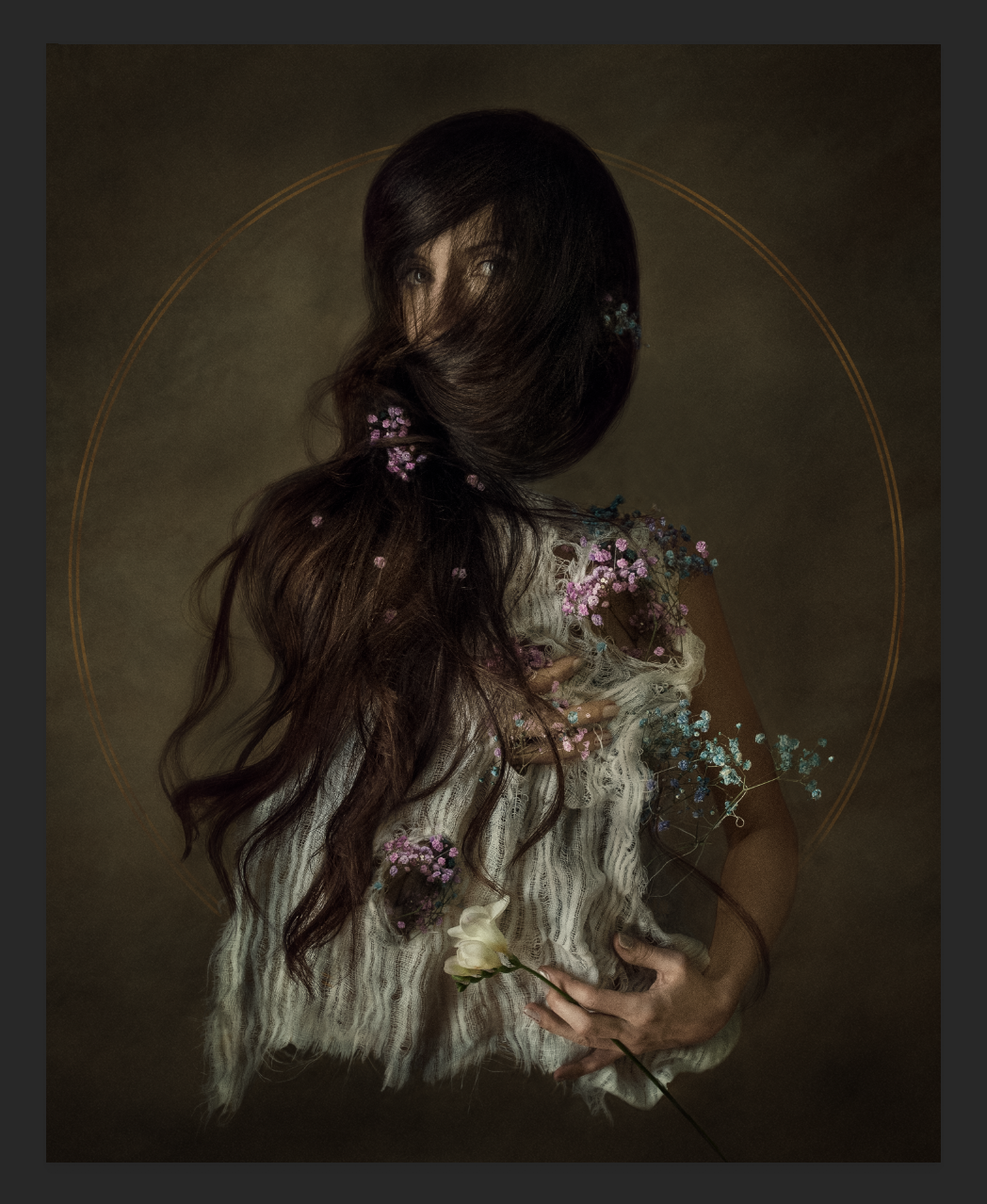
01 Mar Spring Dreams: Deconstructing the Female Form
A Collaboration between Karolina Skorek and Dagmara Giej-Rusnak
I have consistently been captivated by the intricacies of the female form, and my artistic endeavors have aimed to dissect and reconceptualize it in innovative and thought-provoking manners.
In a collaborative endeavor with curator and philosopher Dagmara Giej-Rusnak, we delved into the symbolism of hair and the concealment through hair. As well as the notion of spring as a period of rejuvenation and regeneration. Our exploration involved the utilization of fresh flora and diaphanous fabric with dangling threads to further represent the fluidity and ephemerality of the female form.
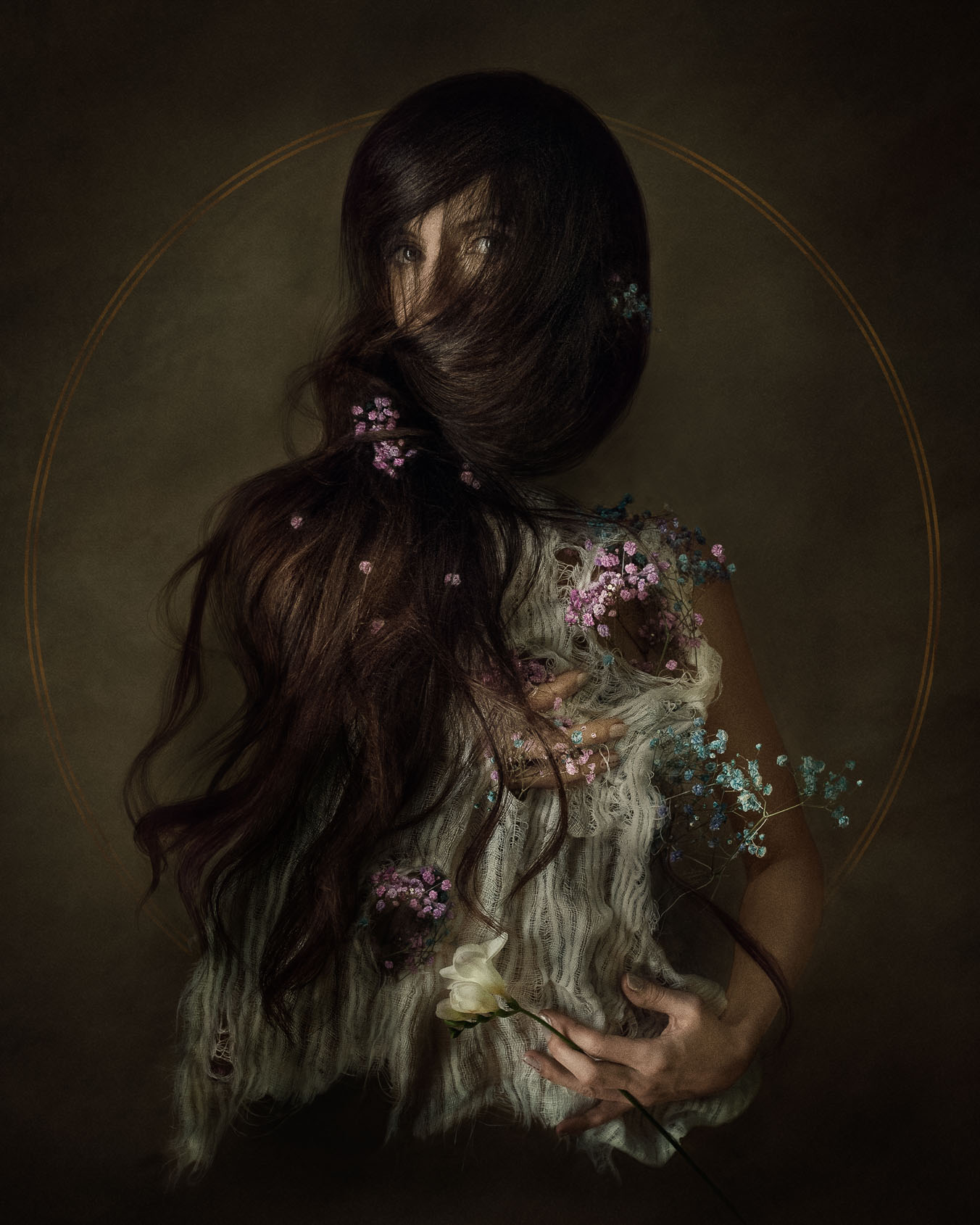
Drawing upon philosophy and art history, we deconstructed the female form and generated a series of art pieces that scrutinise diverse facets of femininity. Our collaboration facilitated an examination of the concepts of the concealed, the mysterious, and the subconscious, employing hair as an emblem of these obscured elements.
Giej-Rusnak’s expertise in philosophy and art history enriched the project by introducing a novel dimension as we investigated the symbolism of the female form and its depiction throughout art history. Our discourse enabled us to discern connections across various cultures and temporal contexts, examining the manner in which the female form has been employed to convey disparate messages and meanings. I incorporated fresh flowers, diaphanous fabric with dangling threads, and other materials to evoke a sense of delicacy and fragility within the art pieces. The suspended threads from the fabric symbolise the notion of vulnerability and life’s frailty.
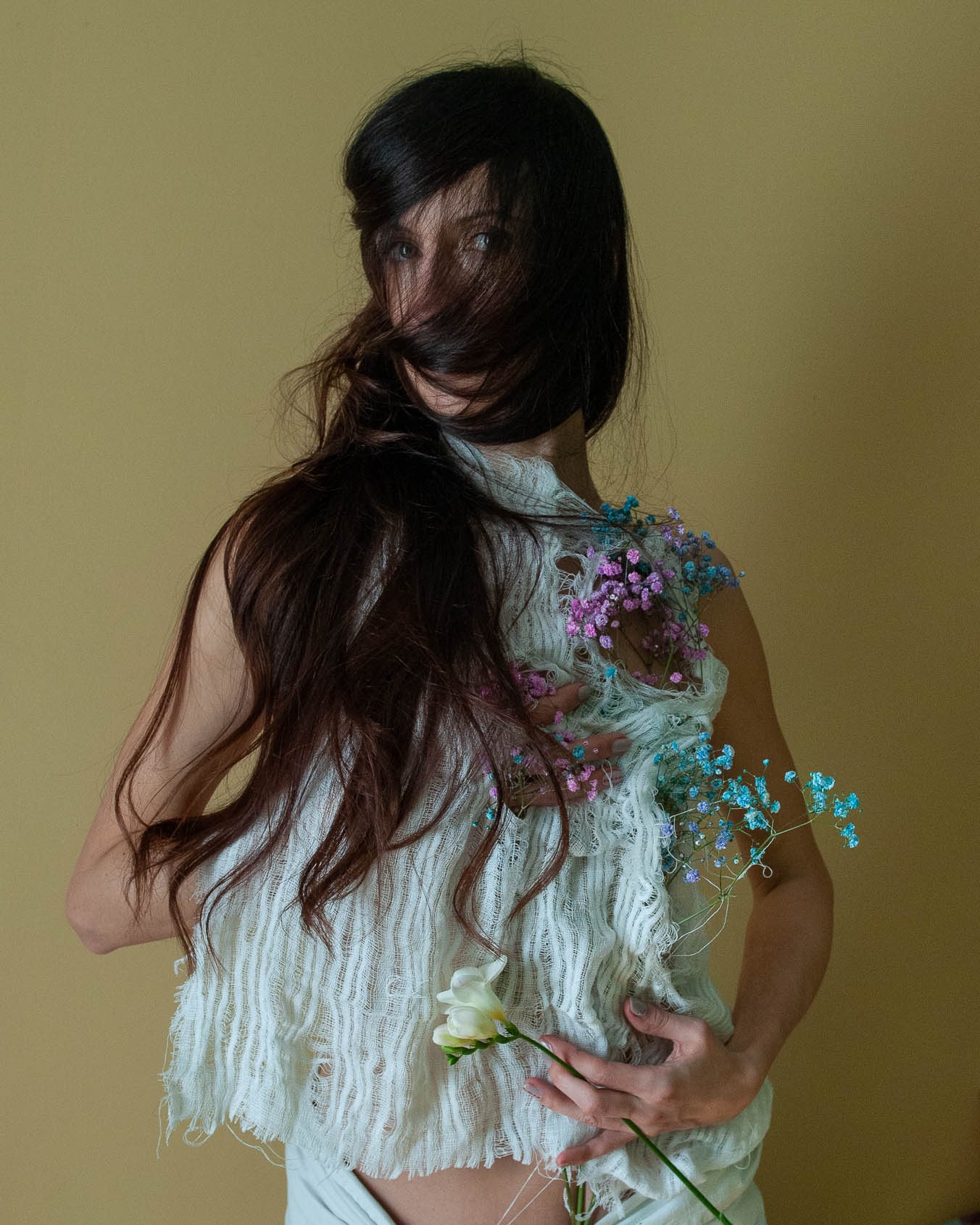

One central theme of this project is the deconstruction of the female form, challenging traditional notions of beauty and femininity by creating artworks that dissect the female form into its constituent parts. This approach seeks to encourage viewers to reconsider their preconceived ideas about the female body and perceive it in a new light.
The deconstruction of the female form also bears a connection to the artistic movement of Formism, which originated in Poland in the early 20th century. Formism was characterized by the use of simplified forms, vibrant colors, and bold outlines, aiming to create art that was both modern and accessible to the public. My work is a contemporary interpretation of this movement, capturing the essence of Formism while integrating it into the present day.
The use of sheer fabric and threads adds a painterly quality to the artworks, with the fabric functioning as a canvas for creating paintings using threads as brushstrokes. This technique allows for the exploration of the relationship between traditional and contemporary media and facilitates the creation of works that are both painterly and sculptural. The fusion of these different artistic techniques results in a unique visual experience that challenges conventional boundaries and expands the scope of artistic expression.
Through my collaboration with Dagmara Giej-Rusnak, a philosophical dimension was brought to the project, enriching its conceptual depth and further expanding the range of themes explored. This partnership enabled the merging of artistic and philosophical perspectives, resulting in a more comprehensive and multifaceted investigation of the female form and its representations throughout history.
Symbolism and Theme:
“Reborn” is a compelling exploration of themes such as transformation, renewal, and the mysteries of the female form. The subject’s partially obscured face, hidden behind a veil of cascading hair, adds an element of enigma and introspection, inviting the viewer to ponder the emotional and psychological dimensions of rebirth. The delicate, flowing fabric represents both vulnerability and protection, encapsulating the subject as she undergoes a process of metamorphosis.
In the context of the philosophical ideas of Carl Jung, the image can be interpreted as a visual representation of the process of individuation, a journey toward self-discovery and self-realization. The subject’s obscured face and the dreamlike environment suggest a connection to the unconscious realm, which, according to Jung, is a vital source of personal growth and transformation. The image also evokes the notion of the anima, a Jungian archetype representing the feminine aspect of the male psyche, signifying a reconciliation of opposing forces within the individual.
Additionally, “Reborn” can be seen as a reflection on the cyclical nature of life, drawing upon philosophical ideas from various traditions. The theme of rebirth can be connected to the concept of eternal recurrence in Nietzsche’s philosophy, which posits that life is an endless cycle of creation and destruction, and that individuals must embrace the transformative power of suffering to achieve self-overcoming. The image might also resonate with Eastern philosophies, such as the Hindu belief in the cycle of samsara or the Buddhist concept of rebirth, which emphasise the interconnectedness of life and the potential for spiritual growth and enlightenment.
The image’s symbolism and themes thus invite the viewer to delve deeper into a variety of symbols and feminism.

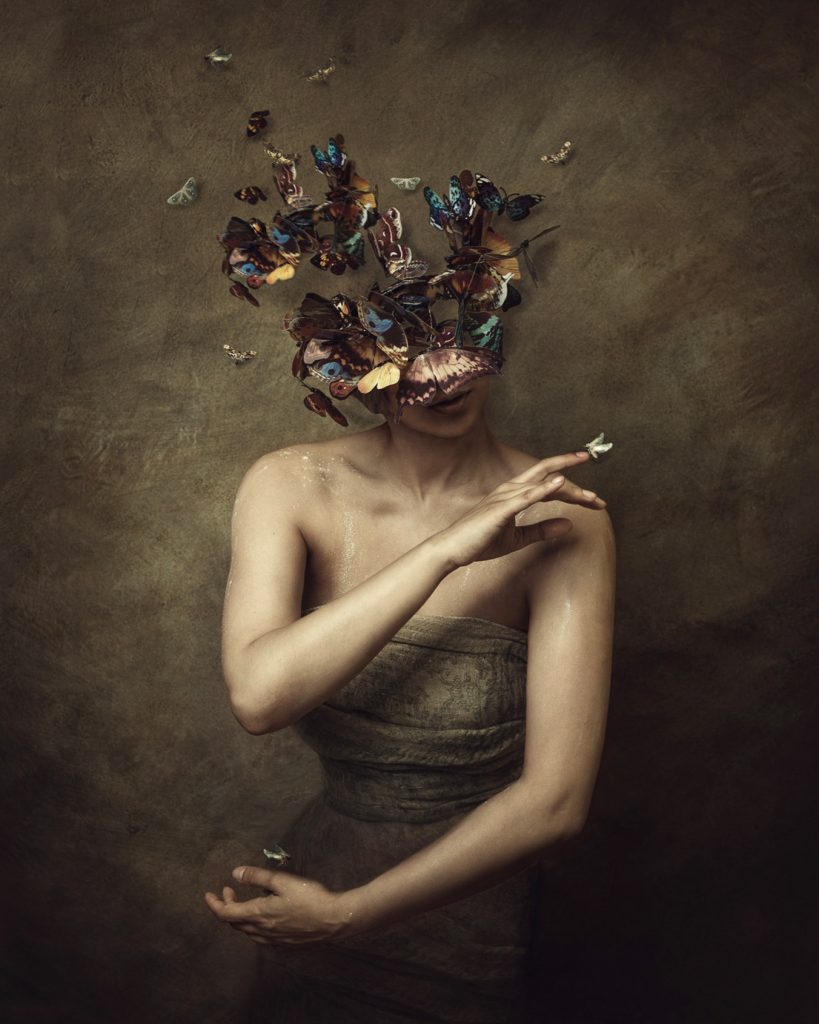
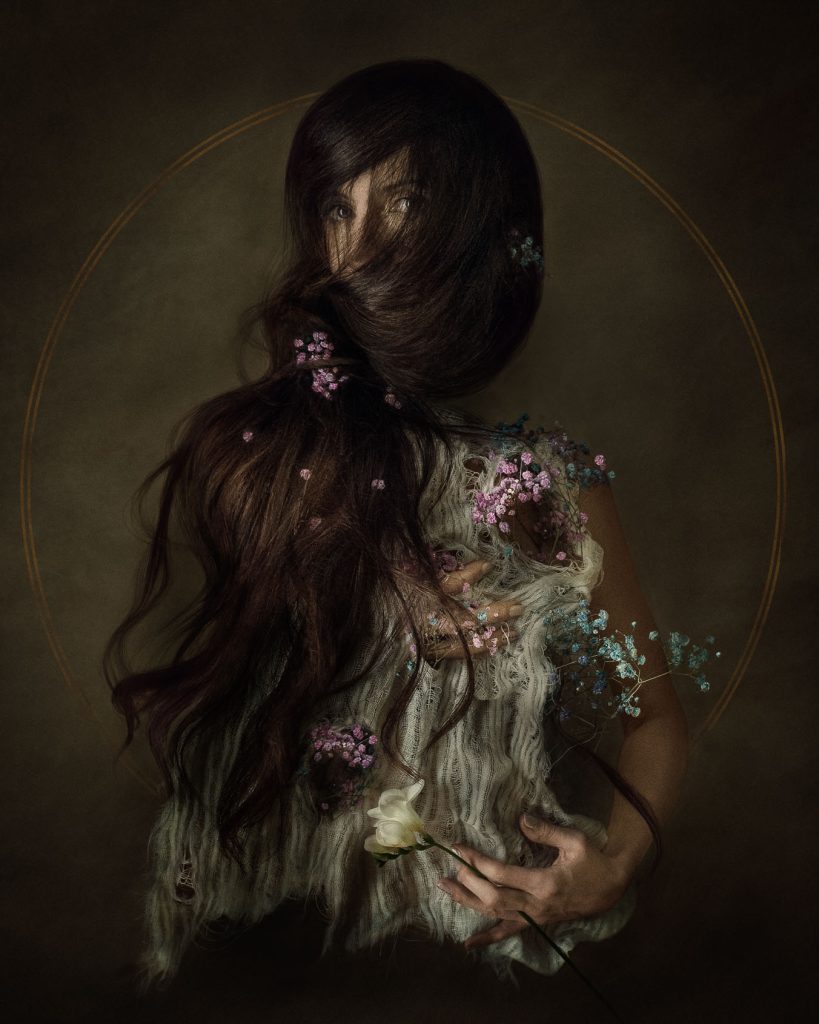
No Comments